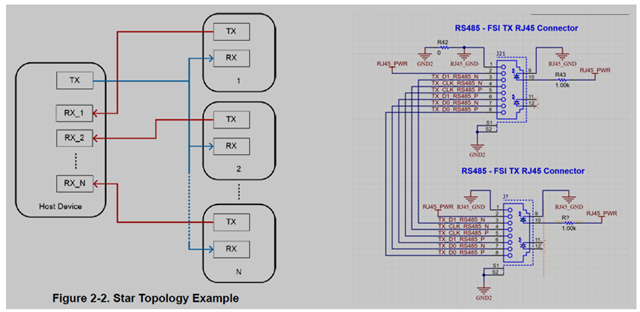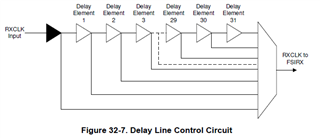We are also exploring Fast Serial Interface for the board to board communication . I’m referring to the document “Using the Fast Serial Interface (FSI) With Multiple Devices in an Application” to understand FSI.
Star Topology is preferred over Daisy Chain(refer below picture), TMS320F28388D Controller is capable of supporting 8 receivers and 2 transmitter. However 2 or 3 Nodes and 1 lead are needed as per our requirements. Kindly request you to address the following queries on FSI
Questions:
1) Lead/Host should have number of transmitter connectors which should be based on number of nodes and they get shorted internally as shown in the below pictures. Is my understanding correct?
2) What is the advantage of FSI over SPI?
3) How much distance does FSI can support?
4) How is the immunity level of FSI during high frequency data transmission?
5) How is the delay managed when we use Isolator & LVDS?



